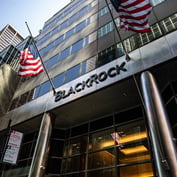Not a week goes by, it seems, when a research outfit doesn’t release a new report attesting to Americans (most especially baby boomers’) lack of preparedness for retirement. Myriad reasons are offered for the abysmal state of planning, among them the slow economic recovery, wages that fail to keep pace with the rising cost of living and a culture that prizes spending over savings.
A growing number of experts also are assigning blame to the substandard retirement and investment planning that Americans are receiving through their employers. Paltry 401(k) fund options, high asset management fees, inadequate plan oversight and the limited availability of employer-sponsored financial planning services are, say critics, major contributing factors to the retirement planning shortfall.
Depressing figures
And the gap is widening. A report published by the Washington, D.C.-based Employee Benefits Research Institute, “2013 Retirement Confidence Survey: Perceived Savings Needs Outpaced Reality for Many,” shows that worker confidence in the affordability of retirement continues to decline. The survey observes an increase in the percentage of workers who are not confident in their ability to pay for basic expenses (16 percent, up from 12 percent in 2011, but statistically equivalent to 13 percent in 2012), medical expenses (29 percent, up from 24 percent in 2012) and long-term care expenses (39 percent, up from 34 percent in 2012).
Cost of living and day-to-day expenses head the list of reasons why workers do not contribute (or contribute more) to their employer’s plan, with 41 percent of eligible workers citing these factors.
“The EBRI survey points up the need for more comprehensive retirement planning education at the worksite,” says Jeffrey Tulloch, vice president of the PlanSmart and Retirewise Programs at MetLife, New York. “As a nation, we are much better at saving and procrastinating than we are saving and implementing a retirement plan. Most of us need someone—a financial advisor—to spur us to action to provide a pathway to a comfortable retirement.”
The financial education that American workers receive through their employer-sponsored 401(k), 403(b) or other retirement plan, many contend, is not fulfilling that need. Too often, say experts, information is limited to an all-employee group meeting with the retirement plan provider to discuss investment fund options, the company match to employee plan contributions, plus additional resources available to employees — online calculators, call center representatives and the like.
Frequently, there is no follow-up meeting between individual employees and an investment advisor to determine how best to allocate retirement savings based on the plan participant’s risk tolerance, age, financial goals or other criteria. Result: Many employees fail to enroll in the plan, defer too little of their pay to meet retirement needs or allocate plan contributions inappropriately.
One problem, observers say, is that plan providers still largely operate within a regulatory straight-jacket. The prohibited transaction rules under the Employee Retirement Income Security Act (ERISA) and the Internet Revenue code prevent a fiduciary investment advisor from recommending plan investment options if the advisor receives additional fees from the investment providers.
A 2011 investment advice regulation from the Department of Labor’s Employee Benefits Security Administration provides an exemption to the prohibition. But the exemption only applies, says EBSA, if “investment advice is provided through “a computer model that is certified as unbiased by an independent expert or through an advisor compensated on a ‘level-fee’ basis,” meaning that the fees do not vary based on investments selected.”
Critics say the exemption has failed to significantly boost face-to-face meetings between investment advisors and plan participants. Some also question whether the exemption’s disclosure requirements inhibit rapport-building between advisor and client because of perceived conflicts of interest.
“Transparency in the planning engagement is generally in the consumer’s interest,” says Anthony Domino, the managing director of Associated Benefit Consultants, White Plains, N.Y. “But it is often hard to communicate potential conflicts of interest without creating confusion.
“Because I may be conflicted doesn’t mean that my advice is bad,” he adds. “Too often, clients are dismissive of advisors who disclose a conflict of interest or who disclose their fees.”
Market-watchers also say that investment options offered to plan participants often are too limiting. The menu of choices available — a mix of equity funds, fixed income funds and money market funds — may not provide a sufficiently broad array of non-correlating assets to sustain investment growth objectives while also insulating plan participants from market volatility.
Credit for the limited selection is due the mutual fund companies, which critics say maintain a “stranglehold” on the fund options offered participants in 401(k)s and other profit-sharing plans. In recent years, many of these plans have migrated to “target date” or “life cycle” funds that automatically reapportion employees’ plan portfolios to progressively more conservative allocations as they approach retirement age.
The aim: to protect pre-retirees’ nest eggs from market downturns. So whereas, for example, an employee might have 70 percent of retirement assets invested in equities and 30 percent in fixed income assets 20 years from retirement, at five years from retirement the allocation might be reversed.
The problem, says Ric Lager, is that no one — neither the retirement plan provider nor the plan sponsor — is held responsible for the performance of plan participants’ account values.
“No one is liable for a portfolio’s performance, so it’s up to plan participants to hire an independent advisor to provide the needed investment oversight,” says Lager, a principal of Ric Lager & Company, Inc., Golden Valley, Minn. “The approach advocated by the mutual fund companies, ‘buy-and-hold,’ has never worked as a long-term strategy at any time since 401(k)s came into being in the early 1980s.
“No one is motivated to fix the problem,” he adds. “The mutual fund companies simply want to get their share of the fees that are eating up mutual fund accounts in a buy-and-hold relationship.”
Lager adds that if 401(k) plan participants enjoyed a higher standard of care, rank-and-file employees would pay less in mutual fund fees and have a more diversified asset allocation. The implementation of a “risk management game plan” — including the use of tactical asset allocation techniques — would also help insulate plan participants’ portfolios when the market turns south.
In the absence of better hand-holding from 401(k) providers, Lager recommends that employees redirect their plan contribution, and the corporate match, to self-directed brokerage accounts that offer a greater range of investment products — and at significantly lower cost. Lager estimates that employes could save from 25 to 40 basis points in asset management fees.








 April 23, 2013 at 02:16 PM
April 23, 2013 at 02:16 PM










